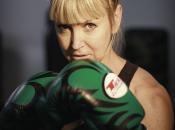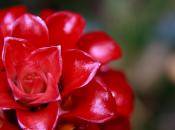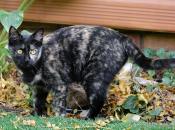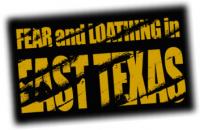
Gettin' Grungy With It
Here's a fun effect to create: grunge type. It's often used on movie posters (think slasher flicks). To create the effect, you need a very "busy" photo, something with lots of hard lines. By using the Threshold adjustment, we'll morph an ordinary photo into a properly distressed, grungy texture which we'll place on top of some type or whatever else you might want.
We won't just plop the texture *onto* the type, mind you, I'll show you how to copy it into a layer mask so you can do some fine-tuning and moving around, if you so desire. Read on!
Type something
Step 1: Pop open a new document. In the Toolbox, set the top color chip to orange.

Step 2: Press T to select the Type tool and set some type in a large, thick font (try a nice slab, sans-serif like Impact). For reasons which will become clear to you in a moment, I typed "FEAR and LOATHING in EAST TEXAS."
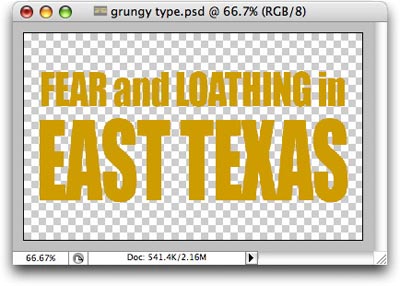
Create a grungy texture
Step 3: Open the Soon To Be A Grungy Texture photo. I took this shot of logs at an East Texas sawmill recently. (Spending a week in the slightly backwards, rather isolated piney woods of East Texas provided inspiration for the title above.)
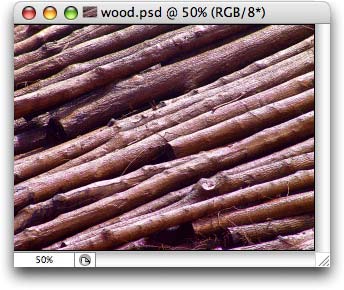
Step 4: Choose Image > Adjustments > Threshold. Drag the slider almost all the way to the left and click OK. The black bits remaining onscreen will become the grungy texture.
NOTE: Experiment with the Threshold slider, though bear in mind that creating too much grunge will render text unreadable.
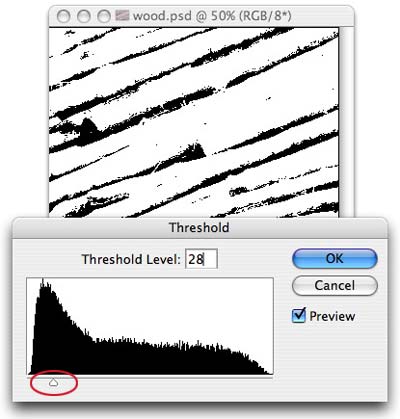
Step 5: To create a selection around the new black texture bits, we'll use the Magic Wand tool (it's made for selecting color). Press W to select the Magic Wand and click inside one of the black areas of the photo. You should now see tiny marching ants around that area of black. To select the rest of the black texture bits, control-click (PC: right-click) inside the selection area and choose Similar from the contextual menu.
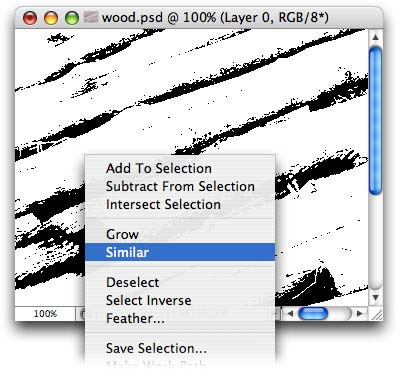
Step 6: Now you should have marching selection ants surrounding all the black areas of the wood. Copy them to the clipboard by pressing Command + C (PC: Ctrl + C).
Bring the texture and type together
Step 7: Back in the type document, create a layer mask by pressing the circle within a square icon at the bottom of the Layers Palette.
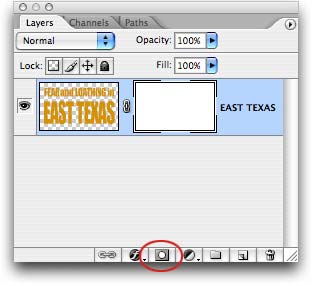
Step 8: Option click the mask icon (PC: Alt click) and your type should disappear from view. Don't panic, this is because you're viewing the mask that you haven't put anything into yet. Paste in your new texture by pressing Command + V (PC: Ctrl + V). Press Command + D (PC: Ctrl + D) to deselect and make the marching ants go away.
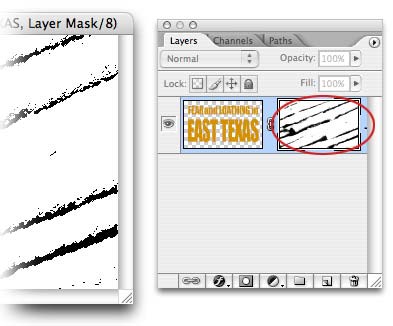
Step 9: Select the type thumbnail in the layers palette and your type will reappear with the new texture on top of it, like so:
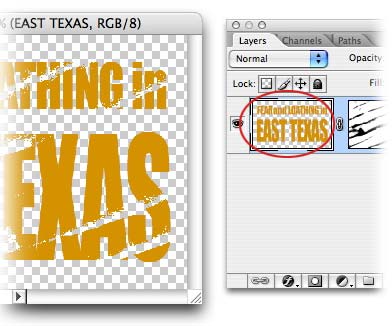
Step 10: If you want to move the texture around a bit, just click the little chain link icon between the layer thumbnail and the layer mask in the Layers Palette to unlock them. This will let you move the mask independently of the type.
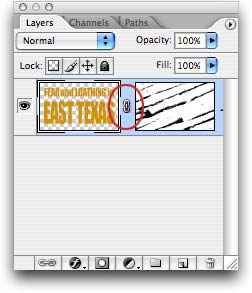
Step 11: Click the layer mask thumbnail to select your texture, then use the Move tool to reposition it.
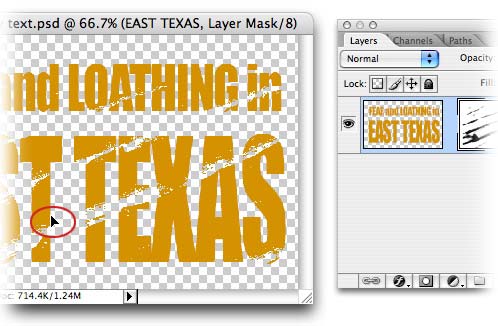
After I finished moving the texture around, I clicked once again between the layer thumbnails to bring back the little chainlink so the mask and type would stay together (just in case I accidentally moved something). For dramatic effect, I created a new layer below the type by Command clicking (PC: Ctrl clicking) the new layer icon (circled below in red) and filled it with black.
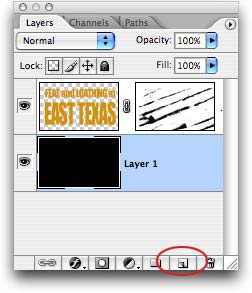
Here's the final image, after I added a with a feathery edge:
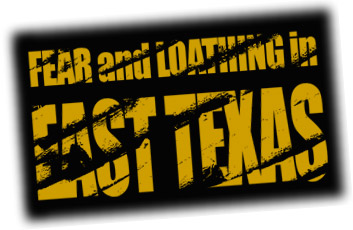
That's all there is to it! By using a layer mask for this effect, we've built in the ability to tweak the texture however you'd like. If too much of your type is covered up, just click the layer mask thumbnail, grab a paint brush and paint with white those areas the texture away. Likewise, if you want more grunge just paint with black to add more texture (be sure to experiment with different brushes too).
I hope this tutorial provides inspiration for creating some grungy type of your own. Once you get the hang of this effect, you'll look at photos in a whole new way, the "Oh that'd make a *great* texture!" way! See you next time :)

